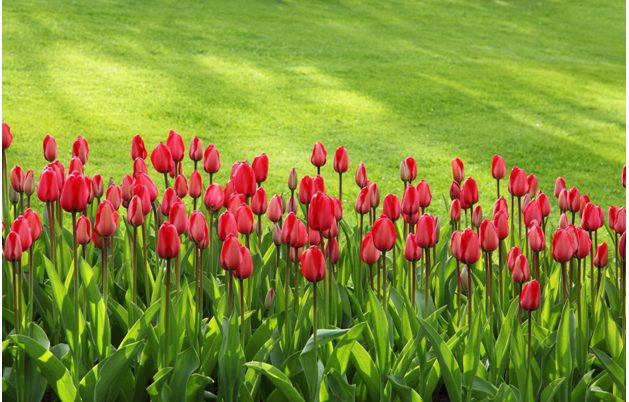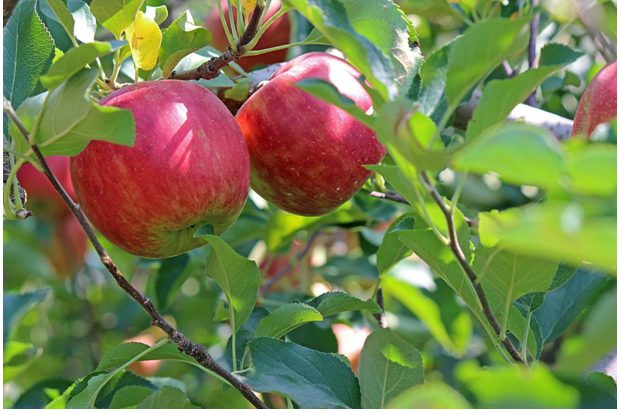Different colors relate to one another in different ways.
Depending on where they sit on the color wheel along with the shades you use for the individual colors, you can make them contrast or complement each other.
Red and green are two colors that are opposites on that color wheel we mentioned.
Therefore, they can sometimes really clash with one another, but in the right circumstances they can look really stunning when combined.
If you’re wondering what color does red and green make when mixed, then you’re in the right place! We will cover not only how to do it, but also some of the uses this combination can have.
How you can mix red and green?
Mixing red and green may not seem like that complex of a task, but there is a lot more to it than that.
If you just go and find the first red and green shades you have in your paint kit, you will likely end up with a mess!
Instead, you should think about what kinds of colors you need before choosing which colors to mix in.
As we will cover later on in this guide, mixing red and green will, essentially, give you a brown color.
Brown can be used in many different cases, though, and the kind of brown you will need can vary. For instance, you may be painting a tree with dark brown wood.
If you mix the lightest reds and greens you have and mix nothing else in with them, then you will likely have a much lighter brown.
That’s why some thought needs to go into it before you start mixing it all up.
We will definitely cover how you can achieve the colors you want later on in the guide. For now, bear in mind that you will need more than just your reds and greens when mixing.
You will also want to have colors like black, white and even blues and yellows. As with any coloring endeavor, part of the fun is in experimenting!
Be sure to have a spare blank page or surface that you can try out different combinations on before you start the final painting.
This could be anything from a spare piece of canvas, paper or even an old piece of wood. Try to make sure the color of the surface is relatively neutral so that the color experimentation won’t be affected.
Also, keep in mind that the tones of the colors will vary depending on how wet or dry the paint is.
It may seem like a lot to keep in mind, but now we will delve into some of the ways you can mix these colors along with various techniques you can use.
Are red and green a good combination to mix together?
The question of whether red and green are a good combination to mix together isn’t an easy answer.
The short answer would be that yes, they are a great combination depending on the result you need.
We touched on the fact that red and green mixed together will give you brown, but brown is not an all-encompassing shade.
If you keep the reds and greens in their own forms and contrast them, then that can also give you interesting results.
If you look at a color wheel, you will note that red and green are opposites. Red and green is also one of the most intense color contrasts to the human eye.
The creator of popular horror character Freddy Krueger even chose red and green for the iconic sweater he wears as he felt that would make the character more unsettling.
While that may be the case, with the right shades they can look amazing together. You will see in fashion that sometimes contrasting colors such as these can be used to create an eye-catching look.
So as you have seen, it can depend on the circumstances whether it is a good combination or not. If the color shades aren’t chosen with care, you could end up with an unappealing look.
That is why we recommend experimenting on a spare piece of material so that you will know what the colors will look like before committing to them.
You’re also not limited simply to shades of reds and greens when mixing different colors, either. As we mentioned, many other colors can be used to get the shades closer to what you want.
You can prepare for certain results and anticipate them if you have a basic idea of the kinds of colors you will get.
In the next step, we will look at some of the results you could possibly end up with these colors.
What results you can expect?
So what color does red and green make? That is the question we set out to answer at the start of this process, and once again there is no simple answer.
To begin with, if you were to grab the first red and green you have in your collection and mix them together, you can bet that you will most likely get a shade of brown.
This won’t be news to you if you’ve read through the other points in this guide, but the answer is more complicated than that.
We tend to think of brown as a pretty boring color, but it is a lot more complex than that.
Take chocolates for example. Chocolate lovers will tell you that there isn’t just one chocolatey brown that all candy bars come in.
Some may be light and milky with lighter browns and a milder taste. Others may be so rich in cocoa that the brown of the chocolate bar borders on being pure black.
Looking at your paint set, why not try out a few combinations of light and dark greens and reds. For example, you could try a nice maroon red with a light leaf green.
You will probably end up with a brown that is a bit darker and flatter. If you keep that maroon red and mix in a richer green, the brown will be darker and richer.
Mixing just reds and greens will make it unlikely that you will reach your target color. If it’s too dark, for example, maybe mix in a bit of white.
Try to start out with moderation before adding these kinds of colors, though. You wouldn’t want to just put a big blotch of white and make it way lighter than you intended.
Add small dabs of the extra paint and mix it in to see how it affects the colors. It’s like working out a chemical formula; everything needs to react properly with each other to achieve the result you want.
Once you have a handle on the ways you can mix the colors, what can you use your creations for? Let’s cover some of the best uses in the next step of the guide.
Best uses for red and green mixes
We’ve mentioned a few times that brown is the most likely result of mixing red and green.
Already in this guide, we have mentioned tree bark and chocolate as a few examples of subjects you can use brown on.
There are many other brown objects and tones that you may need to recreate, though. For instance, you could find tones of browns in dirt and rocks in nature.
That means that you will find a lot of uses for the combination of red and green if working on nature paintings. It could also be used for certain skin tones and eye colors.
Even if you don’t mix the colors together, you can still use the combination for various purposes. It will usually create a jarring effect to the eye, but that doesn’t necessarily have to be a bad thing.
Even with the example of the Freddy Krueger sweater, it may be unsettling but it’s not unpleasant to look at.
Certain combinations would be ugly to certain tastes, though, so you need to find a combination that works for you.
Even if you’re putting together an outfit, you might find contrasting red and green articles of clothing that would work well together.
It not only depends on the subject you’re creating or pairing, but also depends on your own personal taste.
That’s why you shouldn’t simply assume you will have a good combination without testing out various combinations first.
We have very lightly covered the various ways you can make the shades you end up with closer to your needs, but next we will cover some of the ways that you can make the shades lighter or darker.
Lighter and darker red and green mixes
We have covered the question of what color does red and green make, and now we shall look at how you can achieve the exact colors you need.
As we have said a few times in this guide, brown is the most likely color you will end up with. Depending on the shades you use, you might end up with a greyer color instead, though.
Having an eye for color really helps when trying to achieve the shades you’re after. You can do this by looking closely at the subject that you’re trying to paint.
Let’s go back to our example of chocolate and assume you’re creating a still life featuring a darker bar. First, you will want to use darker shades of red and green if you have them.
If the colors you get from your experiments is too light, then add small amounts of black to make it darker. Black and white are not the only colors you could add, though.
Try to look very closely at the colors of the chocolate bar or whatever it is you’re painting. If the color is dark and rich, maybe try out some colors like darker blues to darken the paint.
For something lighter and richer, then maybe some yellows would be the way to go. This is why it’s so important to experiment first before committing to your combinations.
It can be impossible to predict what the color combinations will be exactly, and you might need to try combinations that wouldn’t have immediately come to mind.
Also remember to consider how surrounding elements will affect the colors. For instance, say that the chocolate bar is in a yellow wrapper.
You will need to consider the shades of the chocolate and the shades of the wrapper and see how they interact with one another.
It may sound like a lot to consider, and it can be! It all comes down to being observant, and you also need to not be afraid of putting in some time to try out different methods and combinations.
If you do these things, you will get the hang of it in no time and be able to recreate anything you like.
We used chocolate as an example, but we also covered how there can be tons of subjects you can use brown tones on.
What are some other uses for browns you can create with red and green?

In summary
Hopefully you now have an answer to the question of what color does red and green make when mixed. We tried to show you a few uses for the kinds of colors you’re likely to end up with.
Not only that, but we hope that you also see that mixing the colors is not the only way to use them with one another.
There are so many potential artworks you can create using this combination of colors!
So, get out your paint collection, find something to practice on and see what kinds of awesome colors you can create!



